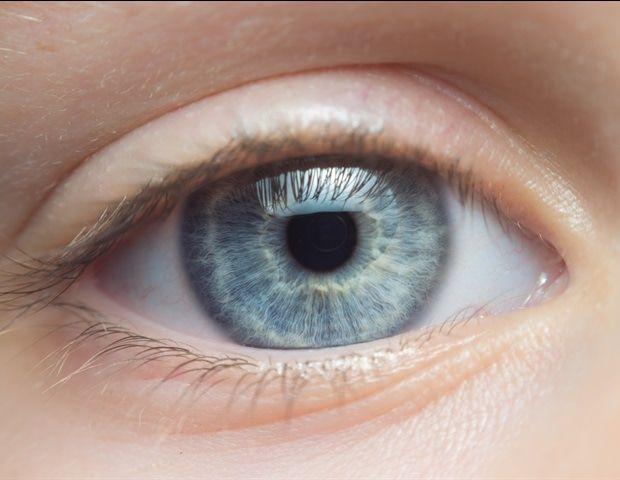AI Tool Advances Objective Evaluation of Facial Palsy
2 Sources
2 Sources
[1]
Fine-tuned AI tool advances objective evaluation of facial palsy
Wolters KluwerMay 29 2025 A "fine-tuned" artificial intelligence (AI) tool shows promise for objective evaluation of patients with facial palsy, reports an experimental study in the June issue of Plastic and Reconstructive Surgery®, the official medical journal of the American Society of Plastic Surgeons (ASPS). The journal is published in the Lippincott portfolio by Wolters Kluwer. We believe that our research offers valuable insights into the realm of facial palsy evaluation and presents a significant advancement in leveraging AI for clinical applications." Takeichiro Kimura, MD, lead author of Kyorin University, Mitaka, Tokyo Refined tool for automated video analysis of facial palsy Patients with facial palsy have paralysis or partial loss of movement of the face, caused by nerve injury due to tumors, surgery, trauma, or other causes. Detailed assessment is essential for evaluating treatment options, such as nerve transfer surgery, but poses difficult challenges. Various subjective scoring systems have been developed but have problems with variability. Objective assessments have been described but are impractical for routine clinical use. Machine learning and AI models are a potential approach for routine, objective assessment of facial palsy. Dr. Kimura and colleagues evaluated a previous AI-developed facial recognition model, called 3D-FAN, in patients with facial palsy. That system was trained to recognize 68 facial keypoints, such as eyebrows and eyelids, nose and mouth, and facial contours. When applied to clinical videos, 3D-FAN - trained on images of people with normal facial movement - was clearly insufficient in assessing facial palsy. The system was prone to miss facial asymmetry in facial palsy, including when patients were instructed to smile; and failed to recognize when the eyes were closed. AI tool shows promise for objective ratings of facial palsy severity Dr Kimura and colleagues attempted to "fine-tune" the model using machine-learning, based on 1,181 images from clinical videos of 196 patients with facial palsy. In this process, facial landmarks were manually relocated to the correct position, with steps to minimize variability. Training sessions were then repeated until there was no further improvement in accuracy. "After machine learning, we found qualitative and quantitative improvement in the detection of facial keypoints by the AI," Dr. Kimura and colleagues write. The refined model showed substantially lower error rates, with improvement in keypoint detection in every area of the face, including the eyelids and mouth - key areas of asymmetry in facial palsy. The article includes illustrations clearly showing the improvement in keypoint detection after machine learning. The authors believe their "fine-tuning" method - with manual correction of landmarks in a limited number of images - "holds potential for broader applications of making AI-assisted models in other relatively rare disorders." Pending further evaluation, the researchers plan to make their AI model freely available to other researchers and clinicians. "Considering our software as one of promising solutions for objective assessment of facial palsy, we are now conducting a multidisciplinary analysis of the effectiveness of this system," Dr. Kimura and coauthors conclude. By providing an objective score, the AI tool may enable more accurate ratings of the severity of facial palsy as well as a quantitative tool for assessing treatment outcomes. Wolters Kluwer Journal reference: Kimura, T., et al. (2025). Fine-tuning on AI-driven Video Analysis through Machine Learning; development of an automated evaluation tool of facial palsy. Plastic & Reconstructive Surgery. doi.org/10.1097/prs.0000000000011924.
[2]
AI Tool Enables Automated Evaluation of Facial Palsy, Reports Plastic and Reconstructive Surgery® | Newswise
Newswise -- May 29, 2025 -- A "fine-tuned" artificial intelligence (AI) tool shows promise for objective evaluation of patients with facial palsy, reports an experimental study in the June issue of Plastic and Reconstructive Surgery®, the official medical journal of the American Society of Plastic Surgeons (ASPS). The journal is published in the Lippincott portfolio by Wolters Kluwer. "We believe that our research offers valuable insights into the realm of facial palsy evaluation and presents a significant advancement in leveraging AI for clinical applications," comments lead author Takeichiro Kimura, MD, of Kyorin University, Mitaka, Tokyo. Patients with facial palsy have paralysis or partial loss of movement of the face, caused by nerve injury due to tumors, surgery, trauma, or other causes. Detailed assessment is essential for evaluating treatment options, such as nerve transfer surgery, but poses difficult challenges. Various subjective scoring systems have been developed but have problems with variability. Objective assessments have been described but are impractical for routine clinical use. Machine learning and AI models are a potential approach for routine, objective assessment of facial palsy. Dr. Kimura and colleagues evaluated a previous AI-developed facial recognition model, called 3D-FAN, in patients with facial palsy. That system was trained to recognize 68 facial keypoints, such as eyebrows and eyelids, nose and mouth, and facial contours. When applied to clinical videos, 3D-FAN - trained on images of people with normal facial movement - was clearly insufficient in assessing facial palsy. The system was prone to miss facial asymmetry in facial palsy, including when patients were instructed to smile; and failed to recognize when the eyes were closed. Dr Kimura and colleagues attempted to "fine-tune" the model using machine-learning, based on 1,181 images from clinical videos of 196 patients with facial palsy. In this process, facial landmarks were manually relocated to the correct position, with steps to minimize variability. Training sessions were then repeated until there was no further improvement in accuracy. "After machine learning, we found qualitative and quantitative improvement in the detection of facial keypoints by the AI," Dr. Kimura and colleagues write. The refined model showed substantially lower error rates, with improvement in keypoint detection in every area of the face, including the eyelids and mouth - key areas of asymmetry in facial palsy. The article includes illustrations clearly showing the improvement in keypoint detection after machine learning. The authors believe their "fine-tuning" method - with manual correction of landmarks in a limited number of images - "holds potential for broader applications of making AI-assisted models in other relatively rare disorders." Pending further evaluation, the researchers plan to make their AI model freely available to other researchers and clinicians. "Considering our software as one of promising solutions for objective assessment of facial palsy, we are now conducting a multidisciplinary analysis of the effectiveness of this system," Dr. Kimura and coauthors conclude. By providing an objective score, the AI tool may enable more accurate ratings of the severity of facial palsy as well as a quantitative tool for assessing treatment outcomes. Read Article: Fine-tuning on AI-driven Video Analysis through Machine Learning: development of an automated evaluation tool of facial palsy Wolters Kluwer provides trusted clinical technology and evidence-based solutions that engage clinicians, patients, researchers and students in effective decision-making and outcomes across healthcare. We support clinical effectiveness, learning and research, clinical surveillance and compliance, as well as data solutions. For more information about our solutions, visit https://www.wolterskluwer.com/en/health. Wolters Kluwer (EURONEXT: WKL) is a global leader in information, software solutions and services for professionals in healthcare; tax and accounting; financial and corporate compliance; legal and regulatory; corporate performance and ESG. We help our customers make critical decisions every day by providing expert solutions that combine deep domain knowledge with technology and services. Wolters Kluwer reported 2024 annual revenues of €5.9 billion. The group serves customers in over 180 countries, maintains operations in over 40 countries, and employs approximately 21,600 people worldwide. The company is headquartered in Alphen aan den Rijn, the Netherlands.
Share
Share
Copy Link
Researchers have developed a fine-tuned AI tool that shows promise for objectively evaluating patients with facial palsy, potentially revolutionizing assessment and treatment of this condition.
AI Tool Revolutionizes Facial Palsy Evaluation
Researchers have developed a promising artificial intelligence (AI) tool that could significantly improve the objective evaluation of patients with facial palsy. The study, published in the June issue of Plastic and Reconstructive Surgery®, demonstrates how a refined AI model can accurately assess facial asymmetry and movement in patients with this challenging condition
1
.The Challenge of Facial Palsy Assessment
Facial palsy, characterized by paralysis or partial loss of facial movement due to nerve injury, has long posed difficulties for accurate evaluation. While various subjective scoring systems exist, they often suffer from variability. Objective assessments, though available, have proven impractical for routine clinical use. This gap in assessment tools has led researchers to explore the potential of machine learning and AI models for consistent, objective evaluation of facial palsy
2
.Fine-Tuning AI for Improved Accuracy
Dr. Takeichiro Kimura and colleagues from Kyorin University in Tokyo evaluated and refined an existing AI facial recognition model called 3D-FAN. Initially trained on images of people with normal facial movement, the original model proved insufficient in assessing facial palsy, often missing asymmetry and failing to recognize closed eyes
1
.
Source: News-Medical
To address these shortcomings, the team employed a "fine-tuning" method using machine learning. They utilized 1,181 images from clinical videos of 196 facial palsy patients, manually correcting facial landmarks to improve accuracy. This process was repeated until no further improvements were observed
2
.Related Stories
Promising Results and Future Applications
The refined AI model demonstrated significant improvements in detecting facial keypoints, with substantially lower error rates across all areas of the face. Particularly noteworthy was the enhanced detection of asymmetry in critical regions such as the eyelids and mouth
1
.Dr. Kimura and his team believe their fine-tuning approach has broader implications, potentially enabling the development of AI-assisted models for other rare disorders. The researchers plan to make their AI model freely available to other clinicians and researchers, pending further evaluation
2
.Implications for Clinical Practice
By providing an objective score, this AI tool may enable more accurate ratings of facial palsy severity and serve as a quantitative measure for assessing treatment outcomes. The researchers are currently conducting a multidisciplinary analysis to further evaluate the effectiveness of this system in clinical settings
1
.This advancement in AI-driven facial palsy evaluation represents a significant step forward in leveraging technology for clinical applications. As objective assessment tools become more refined and accessible, they have the potential to enhance diagnosis, treatment planning, and outcome measurement for patients with facial palsy and potentially other related conditions.
References
Summarized by
Navi
[1]
Related Stories
AI-Powered Smartphone Diagnostics: A Game-Changer for Nystagmus Detection
05 Jun 2025•Technology

AI models achieve breakthrough accuracy in diagnosing brain tumors from MRI scans
08 Dec 2025•Health

AI Tool VisionMD Revolutionizes Assessment of Parkinson's Disease and Movement Disorders
15 Apr 2025•Health

Recent Highlights
1
Google launches Gemini 3 Flash as default AI model, delivering speed with Pro-grade reasoning
Technology

2
OpenAI launches GPT Image 1.5 as AI image generator war with Google intensifies
Technology

3
OpenAI launches ChatGPT app store, opening doors for third-party developers to build AI-powered apps
Technology





